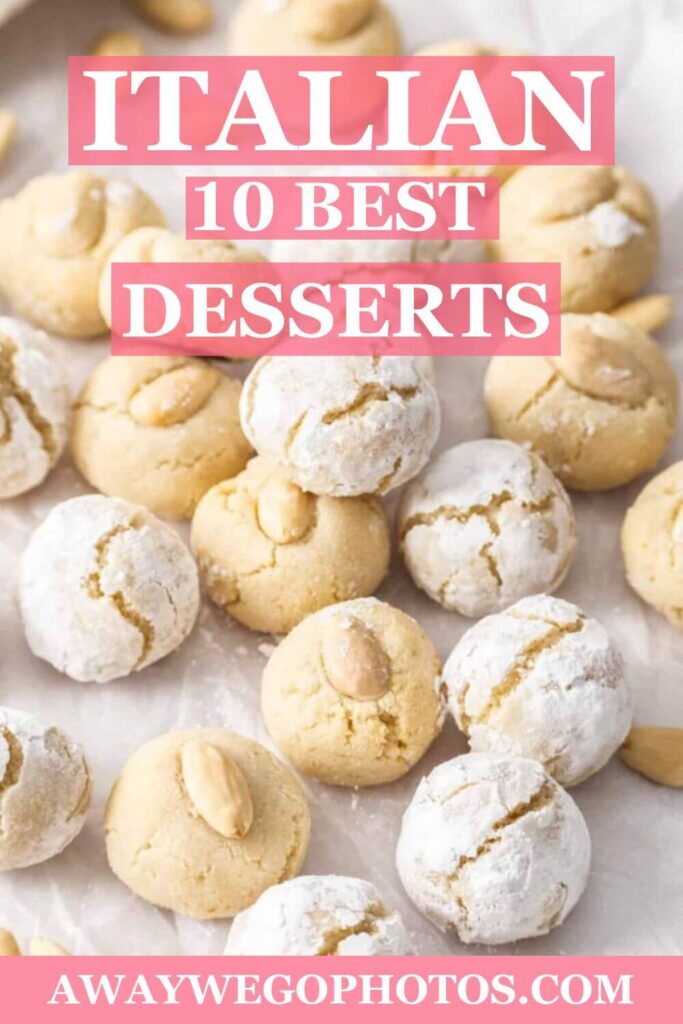Italian desserts are renowned for their indulgent flavors, rich textures, and centuries-old traditions. From the iconic Tiramisu to the delicate Panna Cotta, Italian sweets showcase a mastery of ingredients and techniques that have delighted palates worldwide.
Classic desserts like Cannoli, filled with creamy ricotta cheese, and Gelato, offering a myriad of flavors from fruity sorbets to decadent chocolates, epitomize the artistry and craftsmanship of Italian pastry chefs. Regional specialties such as Sicily’s Cassata Siciliana and Naples’ Baba al Rum reflect the diverse culinary heritage of Italy, incorporating local ingredients and cultural influences.
Whether enjoyed in a bustling cafe in Rome or a quaint trattoria in Florence, Italian desserts evoke a sense of nostalgia and celebration, inviting diners to savor every decadent bite and embrace la dolce vita.
Ready to try Italian Desserts!
Tiramisu
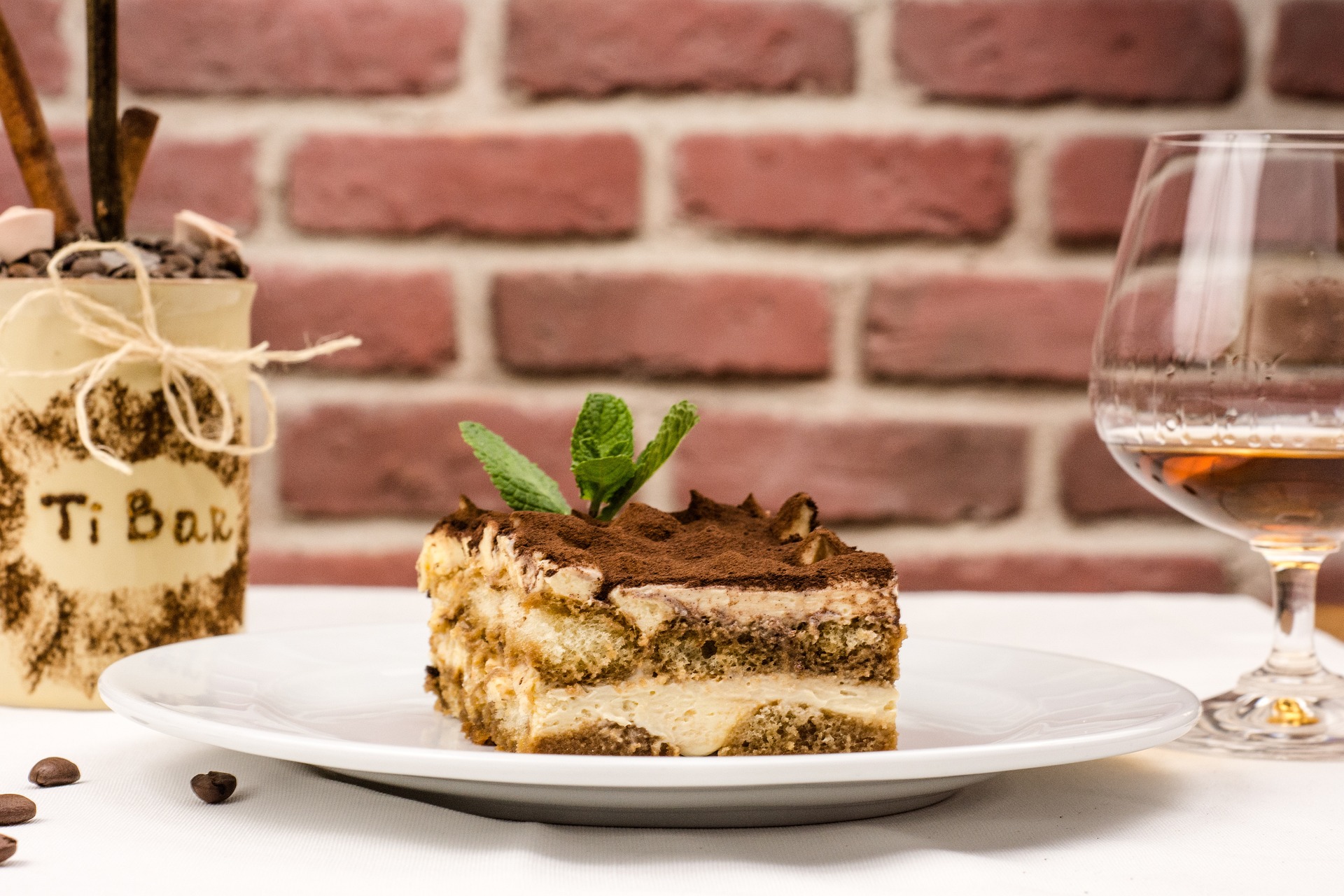
Tiramisu, an iconic Italian dessert, layers espresso-soaked ladyfingers with creamy mascarpone cheese, dusted with cocoa powder. Its name, “pick me up,” reflects its ability to elevate spirits. Loved worldwide, it epitomizes Italian culinary excellence and indulgence.
5 Key Facts
- Origin: Tiramisu originated in Italy, specifically in the Veneto region, around the 1960s. Its exact origins are disputed, but it’s widely believed to have been created in the city of Treviso.
- Ingredients: Tiramisu traditionally consists of ladyfingers (savoiardi) dipped in espresso coffee, layered with a mixture of mascarpone cheese, sugar, and eggs, and dusted with cocoa powder.
- Meaning: The name “Tiramisu” translates to “pick me up” or “lift me up” in Italian, likely referring to the energizing ingredients of coffee and cocoa.
- Popularity: Tiramisu is one of Italy’s most famous desserts and has gained popularity worldwide. It is often featured on dessert menus in Italian restaurants globally.
- Variations: While the classic recipe remains popular, there are many variations of Tiramisu, including fruit-flavored versions, chocolate-based renditions, and even savory interpretations.
Recipes to try
Cannoli

Cannoli, a beloved Italian pastry, features crisp, fried pastry shells filled with creamy ricotta cheese, often flavored with vanilla, citrus zest, or chocolate chips. Originating in Sicily, these delightful treats are a staple of Italian-American cuisine and are enjoyed worldwide for their irresistible combination of textures and flavors.
5 Key Facts
- Sicilian Origin: Cannoli originated in Sicily, Italy, dating back to the Arab rule of the island in the 9th century. The name “cannoli” comes from the Sicilian word “cannolu,” meaning “little tube” or “little cane.”
- Pastry Shell: Cannoli are made with crisp, fried pastry shells shaped into tubes. The dough is traditionally flavored with Marsala wine, white wine vinegar, or sometimes citrus zest.
- Ricotta Filling: The filling of a cannolo (singular of cannoli) typically consists of creamy ricotta cheese, sweetened with powdered sugar and flavored with vanilla extract or citrus zest. Sometimes, additional ingredients like chocolate chips or candied fruit are mixed into the ricotta.
- Varieties: While the classic cannolo features a ricotta filling, there are variations with different fillings such as pistachio cream, chocolate cream, or even savory fillings like ricotta mixed with herbs or cured meats.
- Symbol of Sicilian Cuisine: Cannoli are an iconic symbol of Sicilian cuisine and are popular throughout Italy and worldwide. They are often enjoyed during celebrations and festivals, such as Carnival, and are a staple in Italian-American bakeries and dessert menus.
Recipes to try
Gelato

Gelato, Italy’s beloved frozen dessert, is renowned for its rich, creamy texture and intense flavors. Unlike ice cream, gelato contains less air, resulting in a denser consistency. It comes in a variety of flavors, from classic staples like pistachio and stracciatella to seasonal delights like fresh fruit sorbets.
5 Key Facts
- Texture: Gelato is known for its smooth, dense, and creamy texture, achieved by churning the mixture at a slower speed and incorporating less air compared to ice cream.
- Ingredients: Gelato typically contains milk, sugar, and flavorings such as fruit purees, nuts, chocolate, or coffee. It often uses natural ingredients and has a higher proportion of milk to cream than ice cream.
- Flavors: Gelato comes in a wide variety of flavors, ranging from traditional options like chocolate, vanilla, and pistachio to more exotic choices such as tiramisu, hazelnut, and stracciatella.
- Serving Temperature: Gelato is served at a slightly warmer temperature than ice cream, around 10-15 degrees Fahrenheit (-12 to -9 degrees Celsius), which enhances its creaminess and flavor.
- Cultural Significance: Gelato is an integral part of Italian culinary culture and is enjoyed by locals and visitors alike. Gelato shops, known as “gelaterias,” can be found throughout Italy, offering a delightful and refreshing treat, especially during the hot summer months.
Recipes to try
Panna Cotta

Panna Cotta, an elegant Italian dessert, translates to “cooked cream” in English. It’s made by simmering cream, sugar, and gelatin, then set until firm. Served chilled, this velvety dessert is often topped with a fruit compote, caramel sauce, or berry coulis, delighting taste buds with its silky-smooth texture.
5 Key Facts
- Meaning: Panna Cotta translates to “cooked cream” in Italian, reflecting its primary ingredients of cream, sugar, and gelatin.
- Texture: Panna Cotta is known for its silky-smooth and velvety texture, achieved by simmering the cream mixture and allowing it to set until firm.
- Versatility: While traditional Panna Cotta is flavored with vanilla, it can be customized with various flavorings such as citrus zest, coffee, or liqueurs.
- Presentation: Panna Cotta is typically served chilled in individual molds or ramekins. It’s often unmolded onto serving plates before being garnished with fruit compote, caramel sauce, or berry coulis.
- Cultural Significance: Originating from the Piedmont region of Italy, Panna Cotta has become a beloved dessert enjoyed throughout Italy and internationally. It’s a symbol of Italian culinary elegance and sophistication.
Recipes to try
Zeppole

Zeppole, a classic Italian pastry, are deep-fried dough balls enjoyed especially during festivals like Saint Joseph’s Day. They’re crispy on the outside, soft on the inside, and dusted with powdered sugar. Some varieties are filled with custard or ricotta cream. Zeppole are a delightful treat with a long-standing tradition in Italian cuisine.
5 Key Facts
- Traditional Italian Pastry: Zeppole are traditional Italian pastries, particularly popular during religious festivals and celebrations, such as Saint Joseph’s Day.
- Deep-Fried Dough: Zeppole are made from a simple dough of flour, water, eggs, and sometimes butter or yeast, which is then deep-fried until golden and crispy.
- Varieties: There are various types of Zeppole, including small, bite-sized versions called “Zeppoline” or larger, individual portions filled with custard, ricotta cream, or pastry cream.
- Powdered Sugar Coating: After frying, Zeppole are typically coated with powdered sugar, adding sweetness and enhancing their appearance.
- Cultural Significance: Zeppole hold cultural significance in Italian cuisine, symbolizing joy, tradition, and community. They are often shared and enjoyed with loved ones during festive occasions throughout Italy and in Italian communities worldwide.
Recipes to try
Cassata Siciliana
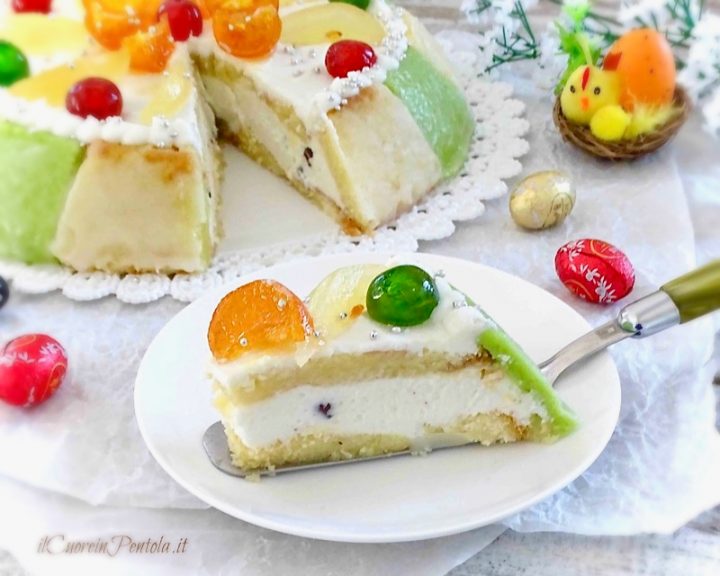
Cassata Siciliana is a traditional Sicilian dessert with origins dating back centuries. It consists of sponge cake soaked in liqueur or syrup, layered with sweetened ricotta cheese mixed with candied fruit and chocolate bits. The cake is often topped with marzipan icing and decorative glace fruits, creating a vibrant and decadent treat.
5 Key Facts
- Sicilian Origin: Cassata Siciliana is a traditional dessert originating from the island of Sicily, Italy, with roots dating back to Arab rule in the 9th century.
- Ingredients: It typically includes sponge cake or pan di spagna soaked in liqueur or syrup, layered with sweetened ricotta cheese mixed with candied fruit and chocolate bits.
- Marzipan Icing: Cassata Siciliana is often covered with marzipan icing, a sweet almond paste, which adds richness and texture to the dessert.
- Decorative Elements: The cake is often adorned with decorative glace fruits, such as citrus peels or cherries, adding visual appeal and festive flair.
- Symbol of Sicilian Cuisine: Cassata Siciliana is a symbol of Sicilian culinary heritage and is often enjoyed during special occasions and celebrations, such as weddings, Easter, and other religious festivals.
Recipes to try
Sfogliatelle

Sfogliatelle, a classic Italian pastry hailing from Campania, features flaky, shell-shaped layers of pastry filled with sweet ricotta cheese filling. The filling is typically flavored with orange zest, cinnamon, and sometimes candied citrus peel. Sfogliatelle are cherished for their crisp exterior and luscious, creamy interior.
5 Key Facts
- Origin: Sfogliatelle originated in Campania, Italy, particularly in the city of Naples, where they have been enjoyed since the 17th century.
- Pastry Layers: Sfogliatelle are characterized by their delicate, flaky layers of pastry dough, which are formed into a shell-like shape.
- Ricotta Filling: The traditional filling for Sfogliatelle is made from sweetened ricotta cheese, flavored with orange zest, cinnamon, and sometimes candied citrus peel.
- Varieties: While the classic Sfogliatelle features a ricotta filling, there are variations with different fillings such as pastry cream, almond paste, or even savory fillings like spinach and cheese.
- Cultural Significance: Sfogliatelle are an iconic symbol of Neapolitan pastry-making and are enjoyed throughout Italy and beyond. They are often served as a special treat during holidays, weddings, and other celebrations.
Recipes to try
Amaretti
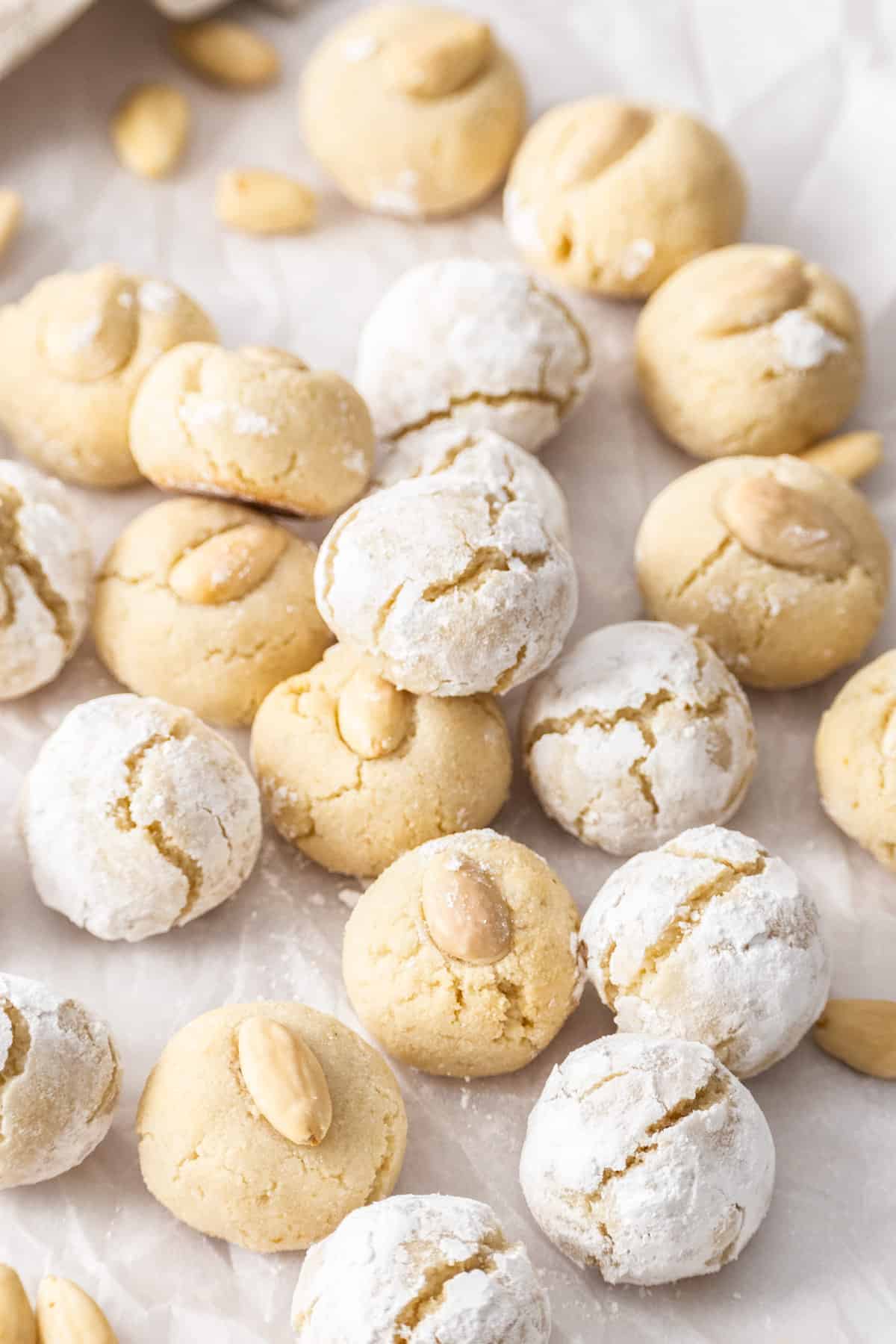
Amaretti are traditional Italian almond cookies with a crisp exterior and chewy interior. Made from ground almonds, sugar, and egg whites, they’re flavored with bitter almond extract or Amaretto liqueur. These delightful treats are often enjoyed with coffee or dessert wine and are a staple of Italian baking.
5 Key Facts
- Almond Cookies: Amaretti are Italian almond cookies made from ground almonds, sugar, and egg whites, giving them a distinct almond flavor and chewy texture.
- Bitter Almond Flavor: They are often flavored with bitter almond extract or Amaretto liqueur, which adds depth and richness to the cookies.
- Varieties: Amaretti come in various forms, including soft and chewy cookies, crunchy biscotti-like versions, and even cake-like variations.
- Cultural Significance: Amaretti are a beloved part of Italian baking traditions and are commonly enjoyed as a sweet treat with coffee or dessert wine.
- Regional Variations: While Amaretti are popular throughout Italy, they have regional variations, such as the Amaretti di Saronno from Lombardy and the Amaretti di Sassello from Liguria, each with its own unique flavor profile and texture.
Recipes to try
Crostata
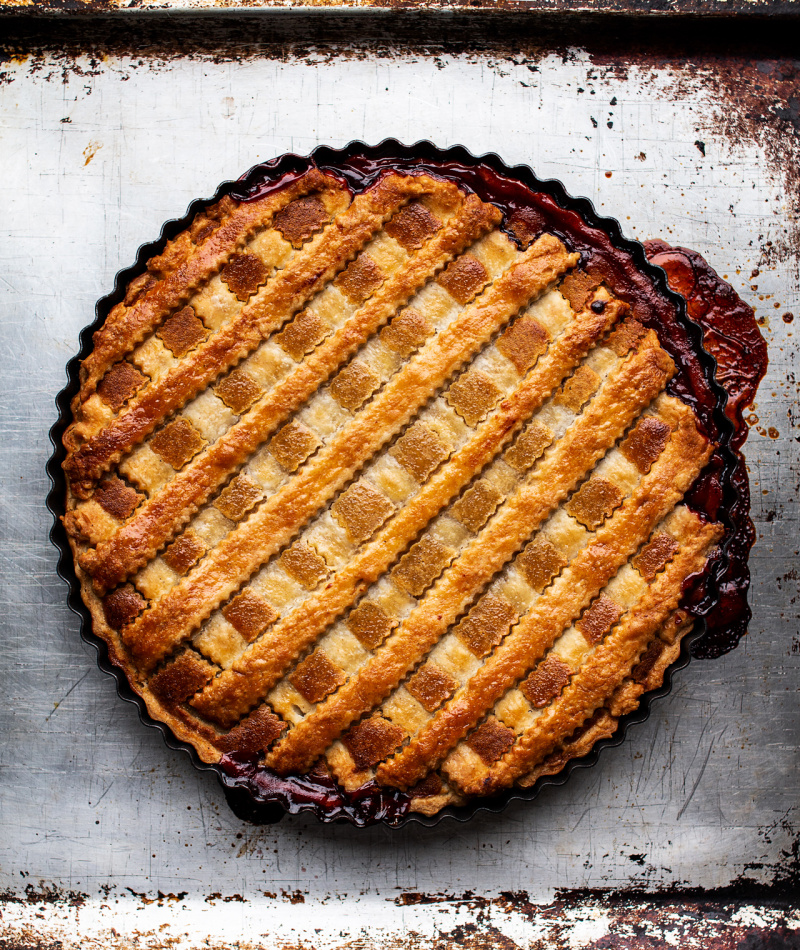
Crostata is a classic Italian tart or pie with a buttery shortcrust pastry crust. It’s typically filled with various jams, custards, or fresh fruit, creating a delightful balance of sweet and tart flavors. Crostata is a versatile dessert enjoyed year-round and often accompanied by a dollop of whipped cream or gelato.
5 Key Facts
- Buttery Crust: Crostata features a rich and buttery shortcrust pastry crust, providing a delicious base for the filling.
- Versatile Filling: It can be filled with various options such as fruit preserves, pastry cream, chocolate, or fresh fruit, allowing for endless flavor combinations.
- Traditional Dessert: Crostata is a traditional Italian dessert enjoyed throughout the country, often served during family gatherings, holidays, and special occasions.
- Decorative Lattice: Some crostatas feature a lattice design on top of the filling, created by weaving strips of pastry dough, adding visual appeal to the dessert.
- Served at Room Temperature: Crostata is typically served at room temperature, allowing the flavors of the filling to fully develop and the crust to maintain its crispness.
Recipes to try
Baba au Rhum (Baba al Rum)
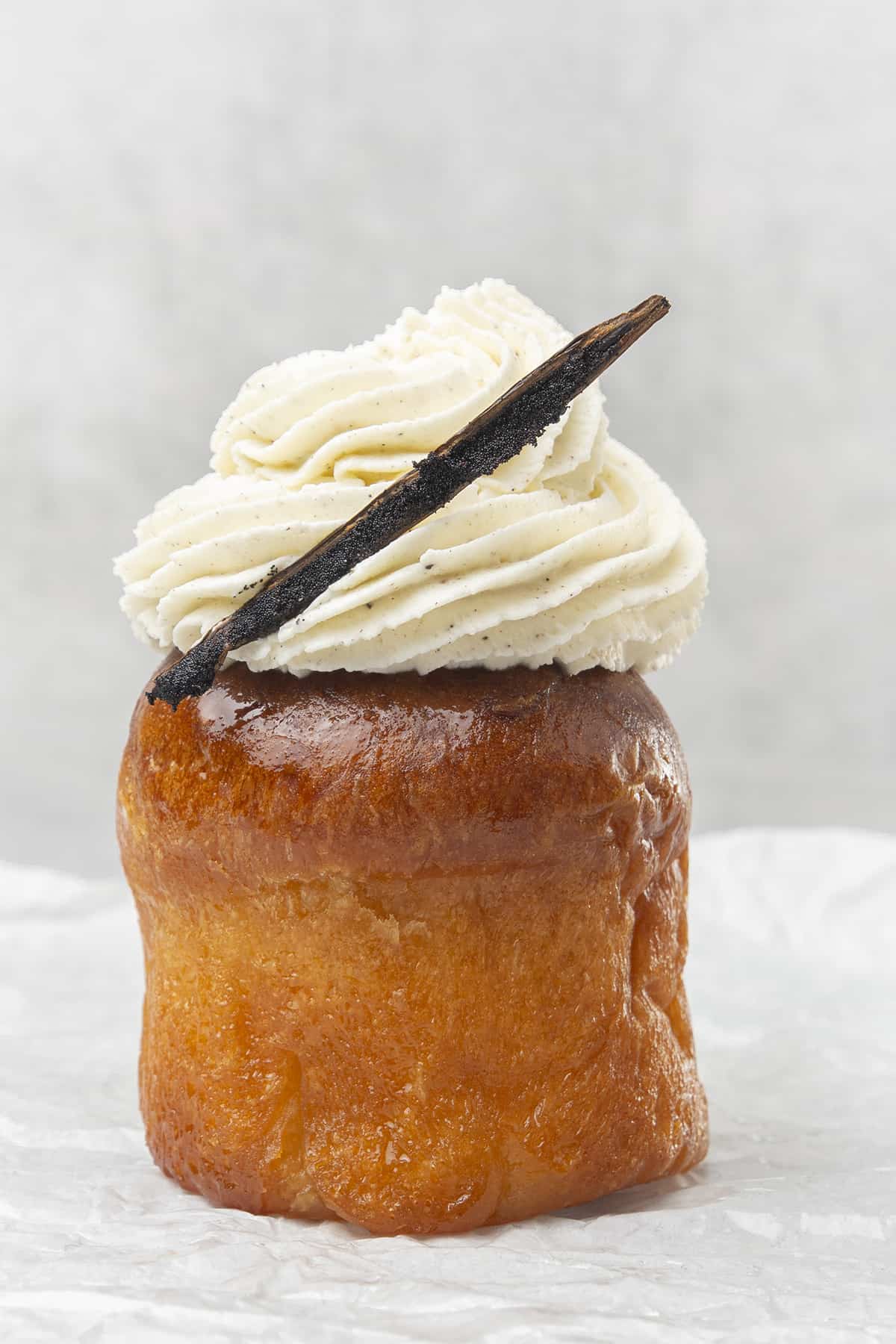
Baba au Rhum, or Baba al Rum in Italian, is a delightful yeast-based cake soaked in a sweet rum syrup. Originating from Naples, Italy, it’s known for its light and airy texture and boozy flavor. Often served with whipped cream or fresh fruit, it’s a beloved dessert enjoyed during special occasions.
5 Key Facts
- Origin: Baba au Rhum, or Baba al Rum, originated in Naples, Italy, in the 18th century.
- Yeast-Based Cake: It is made from a yeast-based dough, similar to brioche, which gives it a light and airy texture.
- Rum Syrup: After baking, the cake is soaked in a sweet syrup made with rum, sugar, and sometimes citrus zest or spices.
- Boozy Flavor: The rum syrup imbues the cake with a rich and boozy flavor, making it moist and decadent.
- Serving Options: Baba au Rhum can be served on its own or with accompaniments such as whipped cream, pastry cream, or fresh fruit, enhancing its flavor and presentation.
Recipes to try
Like this Post? Save it on Pinterest!
